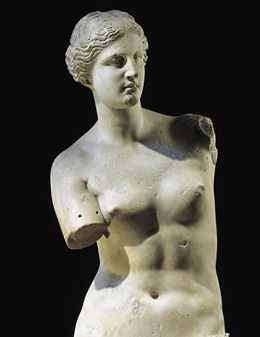 Historians later placed the age of its paintings at 15,000-17,000 yo. Many believe the cave was once the site of religious and hunting rites among the Upper Paleolithic. Historians later placed the age of its paintings at 15,000-17,000 yo. Many believe the cave was once the site of religious and hunting rites among the Upper Paleolithic. | Lascaux Cave. In 1940, four French teenagers were near Montignac when they found a vast underground cavern whose walls were adorned with some 2,000 ancient paintings and engravings. It is known as the “Sistine Chapel of Prehistoric Art.”  |
| In 1974, a group of Chinese farmers found the tomb of the first emperor of the Qin Dynasty. Men digging a well near the city of Xian where stopped when one of their shovels struck the head of a buried statue. When archeologists conducted excavations, they found it was one of some 8,000 life-sized terra cotta soldiers, horses and chariots constructed to guard the 3rd century B.C. Emperor Qin Shi Huang in the afterlife. The tomb and its highly detailed soldiers—each has its own unique face—are some of the most important treasures in China. |  |
 | The Venus de Milo spent centuries buried on the Greek island of Melos. The statue was found in 1820, when a peasant discovered its top half while salvaging marble building blocks from a pile of ancient ruins. The find caught the attention of a French naval officer and in 1821 it was presented to King Louis XVIII and donated to the Louvre. Art historians speculate that the Venus is meant to represent the Greek goddess Aphrodite. Napoleon Bonaparte's soldiers stumbled upon a large basalt slab while knocking down ancient walls to make improvements to a French fort near the town of Rosetta. Once deciphered, the glyphs provided scholars with the tools they needed to begin the first in depth studies of ancient Egyptian language and literature. |  |
In 1947 a band of sheepherders were tending their flock near the ancient city of Jericho. While looking for a lost goat, one of the boys tossed a stone into a nearby cave and was shocked to hear what sounded like a shattering clay pot. When he went in the cave to investigate, he found jars containing a collection of ancient papyrus scrolls.

The Dead Sea Scrolls contain some of the earliest known pieces of the Bible. | When the Declaration of Independence was originally issued, 200 copies were printed. Only a few have ever been found and verified. One of those was discovered in 1989 after a Pennsylvania man went into a thrift store looking for a picture frame. His $4 frame and picture hid copy number 25 of the U.S. Declaration of Independence. It sold for nearly $2.5 million. |  |
 Historians later placed the age of its paintings at 15,000-17,000 yo. Many believe the cave was once the site of religious and hunting rites among the Upper Paleolithic.
Historians later placed the age of its paintings at 15,000-17,000 yo. Many believe the cave was once the site of religious and hunting rites among the Upper Paleolithic.









No comments:
Post a Comment